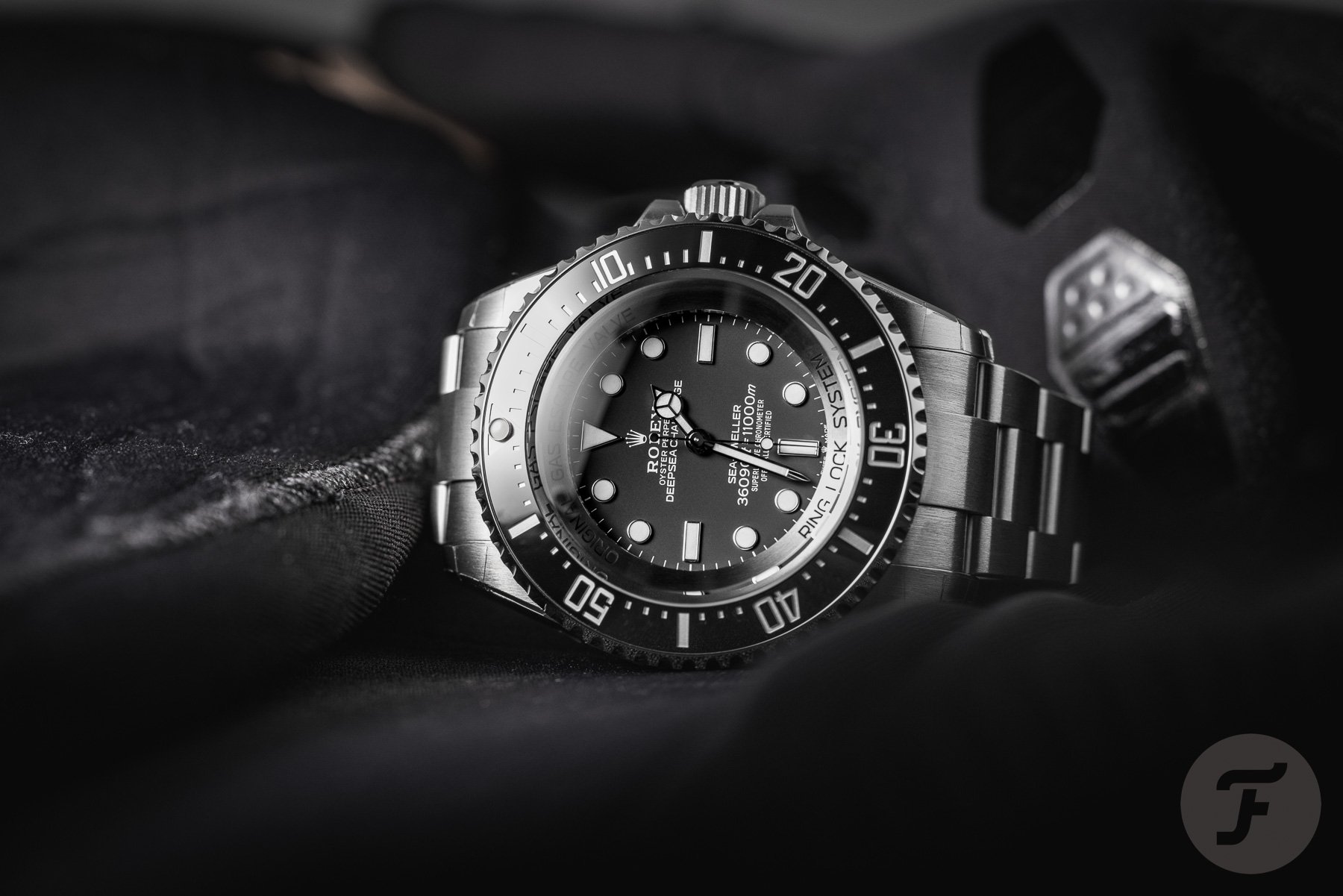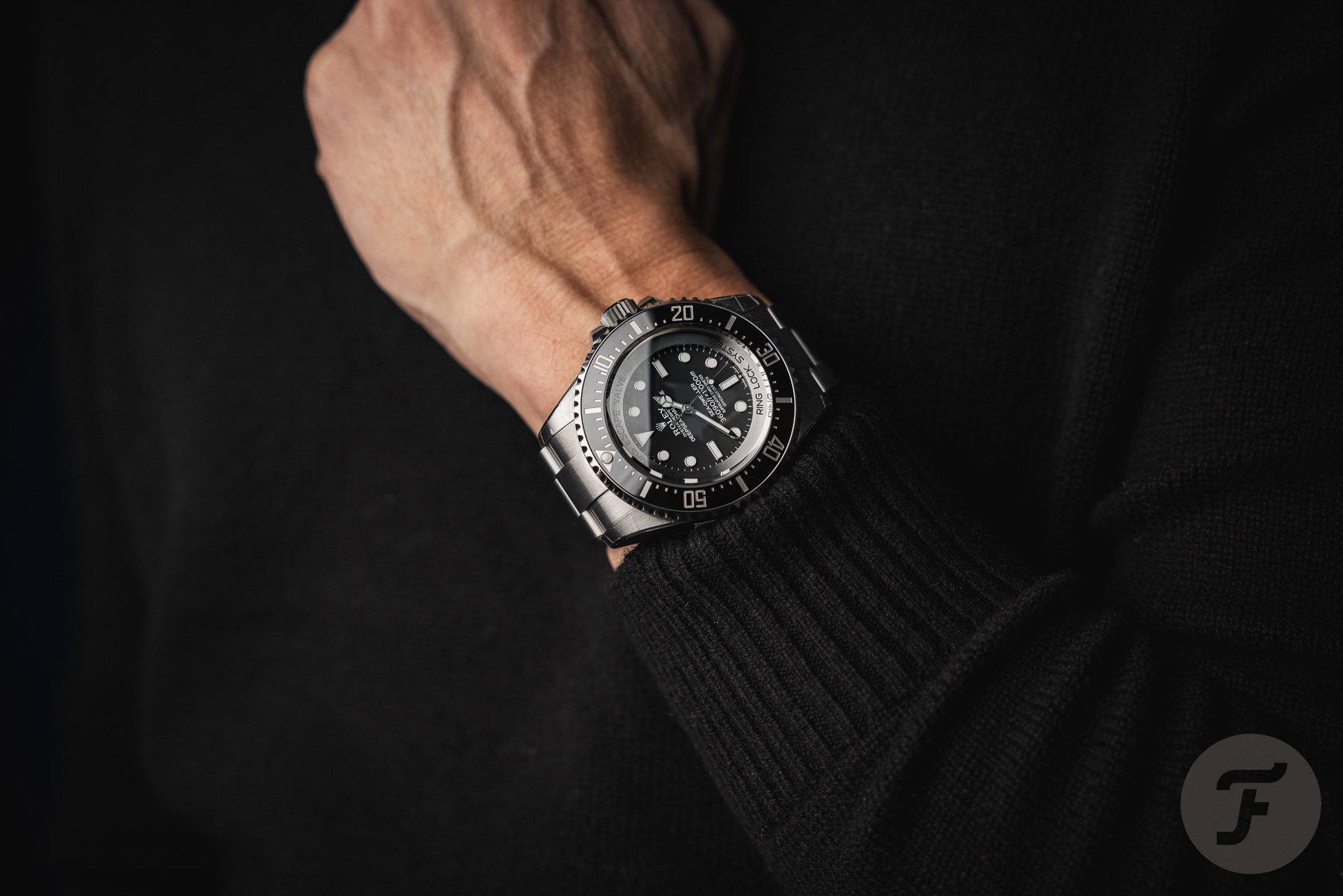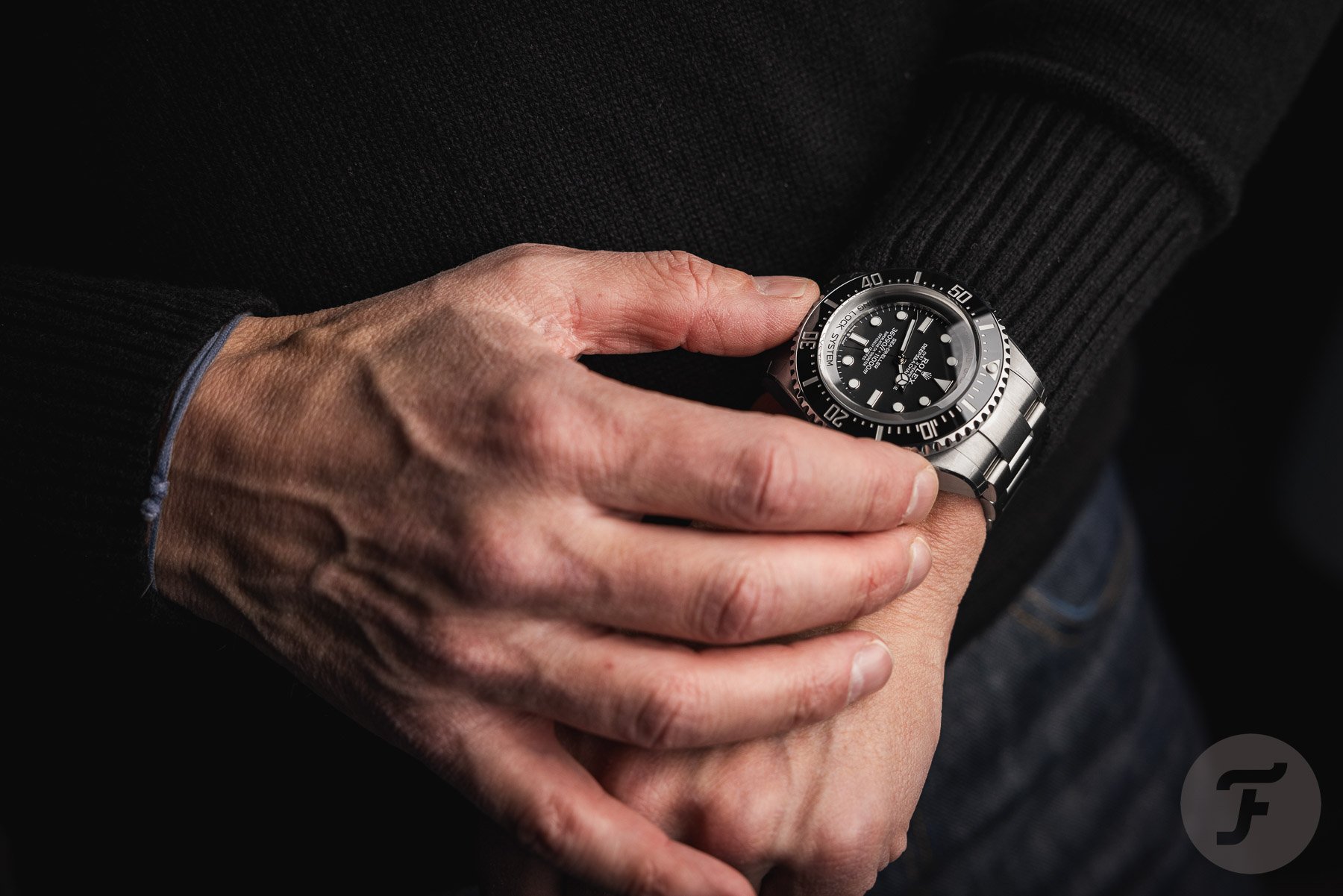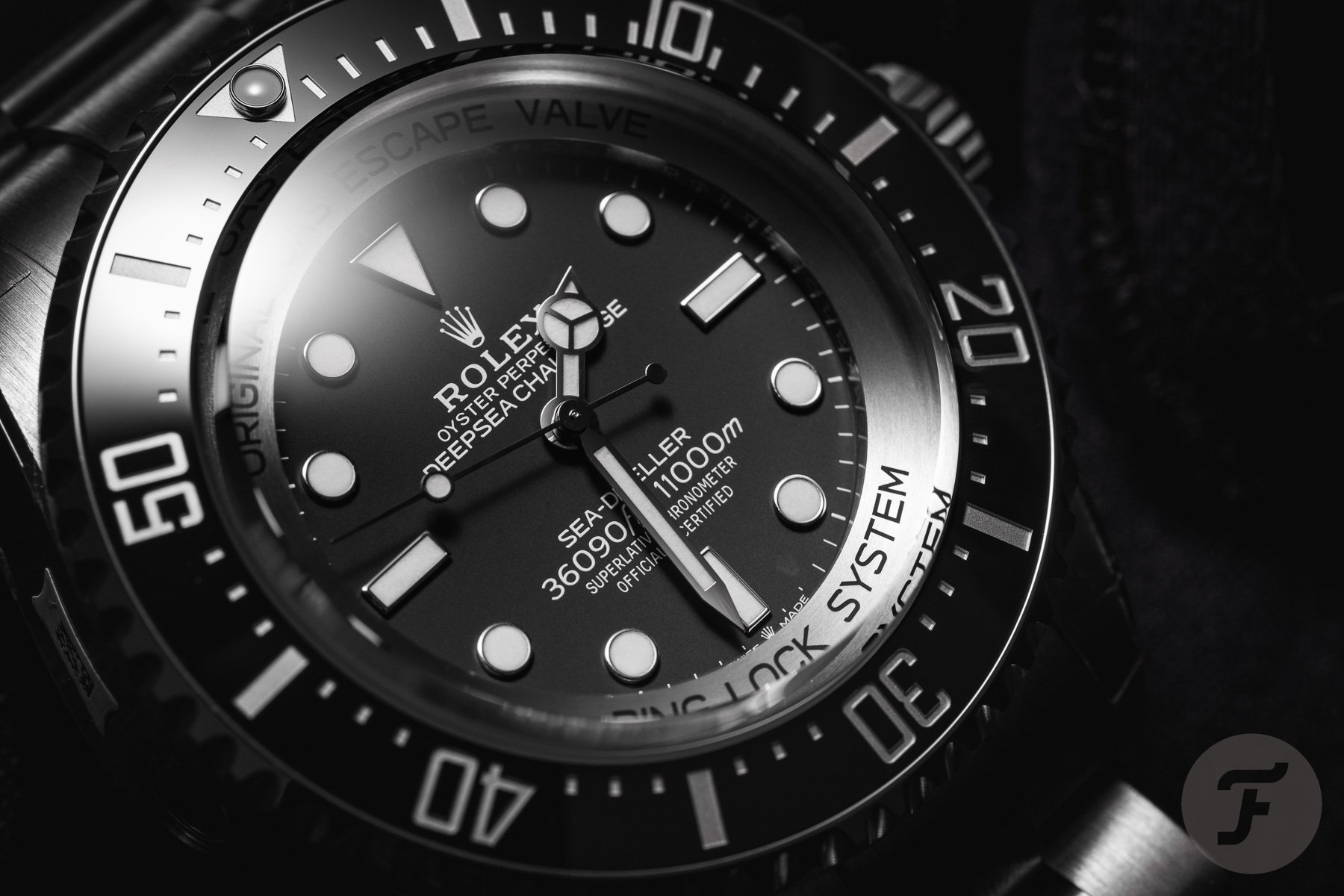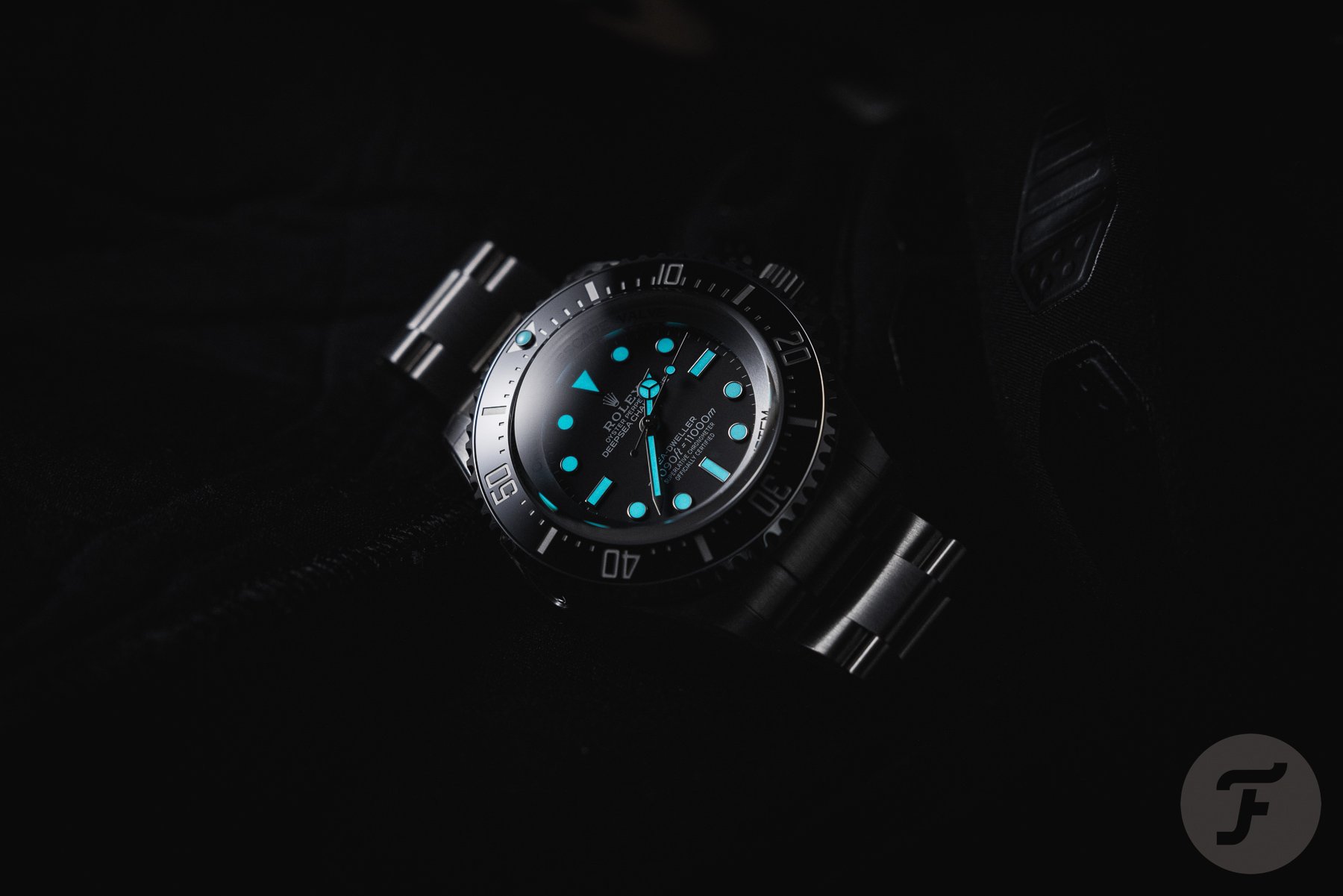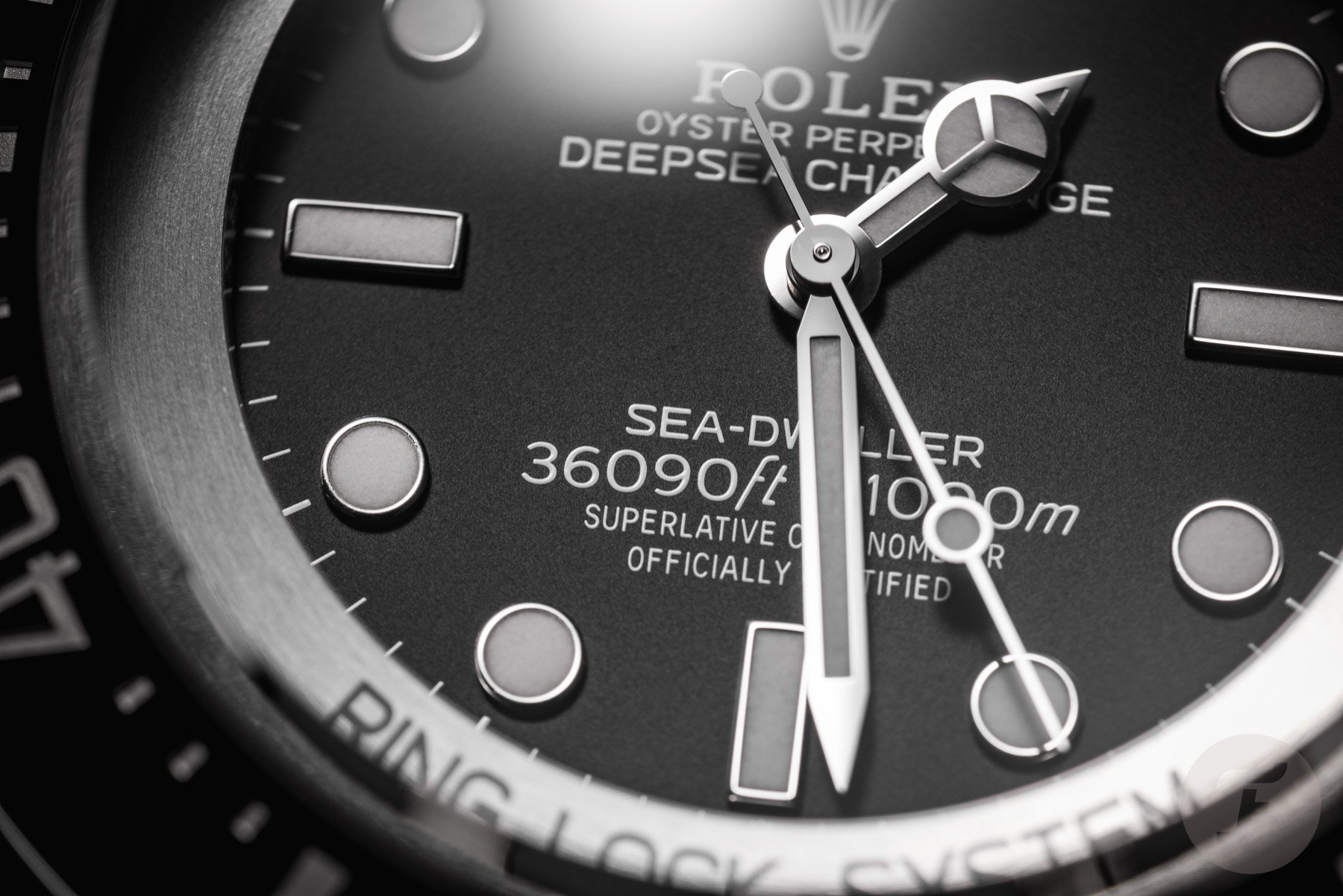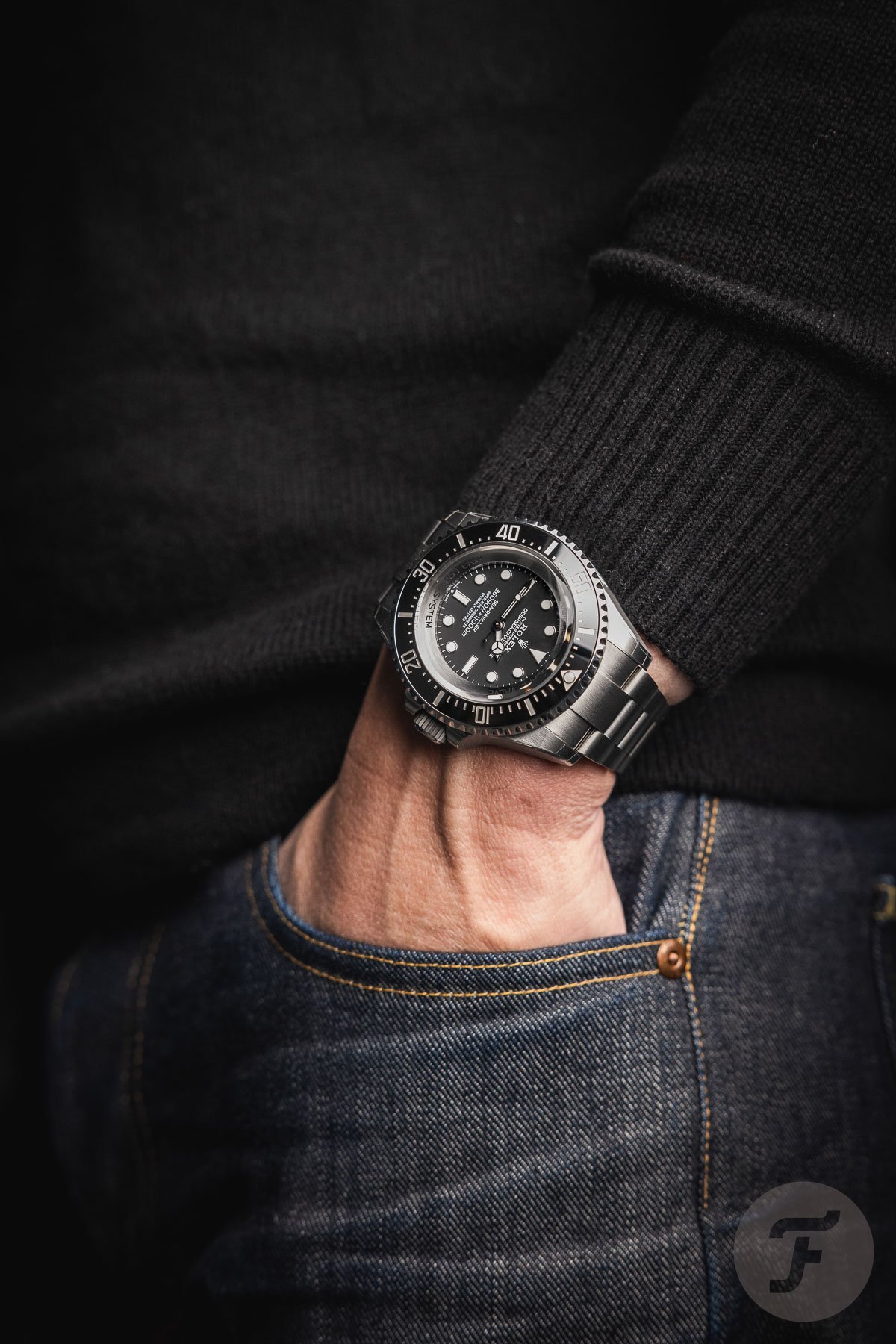There She Blows! The 50mm Rolex Deepsea Challenge Surfaces At Fratello HQ
Until recently, my only sighting of the Rolex Deepsea Challenge was earlier this year. In Geneva, during Watches and Wonders, the brand with the crown showed me one that I could try out for a little bit. It was a humbling experience in more ways than one, mainly because of the watch’s extravagant proportions. Rolex launched the very special dive instrument late in 2022, and what caught a lot of attention was the fact that it was the first (non-prototype) watch in titanium from the brand. The watch in RLX titanium now has a smaller cousin in the shape of the 42mm Yacht-Master, and it was that watch that I longed for even more after handling the 50mm Deepsea Challenge that surfaced out of the (deep) blue at Fratello HQ.
The workings of Rolex are as unfathomable as the oceans are deep. The Rolex Deepsea Challenge (ref. 126067) quite unexpectedly surfaced first in the last quarter of 2022. And it caused some waves. The use of RLX titanium, for instance, a Grade 5 titanium alloy selected for its relatively low weight and resistance to deformation and corrosion, was a first for the brand. The experimental watch that led to the creation of this “Super-Sub” was made of 904L steel and, in 2012, accompanied oceanographer/movie director James Cameron to the depths of the Mariana Trench, the deepest spot on Earth at 10,908 meters (35,787 feet) below sea level. Cameron claimed this accomplishment 22 years after oceanographer Jacques Piccard and U.S. Navy Lieutenant Don Walsh dove to 10,916 meters (35,814 feet) inside the bathyscaphe Trieste and touched the bottom with the Rolex Deep Sea Special attached to the vessel’s outer hull.
Rolex Deepsea Challenge: wrestling with the whale
The watch that went down with Cameron wasn’t attached to his wrist. The experimental watch was strapped to the manipulator arm of the submersible. That makes sense since the numbers associated with that watch are inhuman, so to speak. It has a 51.4 × 28.5mm case with a 14.3mm-thick sapphire crystal, and since the case is made of steel, it weighs well over 300 grams. The titanium production version, however, is made to be worn on a human arm. It is around 30% lighter, weighing in at 250 grams, so that’s a good start. The dimensions are also a bit more humane. The Deepsea Challenge has a 50 × 23mm case, a 9.5mm-thick sapphire crystal, and a 61mm lug-to-lug length.
The production version is smaller than the watch Cameron strapped to the robotic arm, yes, but ever so slightly. And when I put the watch on my wrist, it felt like I was wrestling a whale. The watch also made me laugh. It looks a bit like Marvel took a Submariner and upgraded it into a superhero watch. A less heroic description of the Deepsea Challenge is that it looks like a Sub in a fat suit. But once the watch has been on the wrist for a little while, the laughing stops. That’s not because you’re completely overwhelmed by its looks or anything, no. Rather, it’s because the watch is so uncomfortable on the wrist that it starts to hurt. A thick layer of neoprene between the wrist and the watch is highly advisable. And that’s also the way this watch is intended to be worn.
Wear it “where the sun don’t shine”
The Rolex Deepsea Challenge is a watch you wear “where the sun don’t shine” — at a depth of 11,000 meters (36,090 feet), that is, the depth this watch can withstand. After diving a kilometer underwater, you’ll be well into the aphotic zone, the pitch-black realm where sunlight does not penetrate. This is where Rolex’s dive watch shines. If you wear this while taking a casual dip in the Mediterranean or, even worse, while gallivanting down the famous Boulevard de la Croisette in Cannes, you will look like an absolute tool. It is as preposterous as imagining keeping a blue whale in your water tank at home.
After taking off the Deepsea Challenge and massaging my left wrist a bit, I noticed that this tool watch is not a blunt instrument. The satin-brushed finish of the case and bracelet of this titanium watch has a strong visual presence. It contrasts very nicely with the shiny, polished finish on the crown guard and the chamfered top edges of the case. These highlight the curved profile of the lugs and give the watch a slightly lighter look.
As solid as can be
The three-row Oyster bracelet is a very sturdy affair. Titanium bracelets can feel a bit flimsy sometimes, but this one is as solid as can be. And so is the clasp with its innovative Glidelock and Fliplock extension systems that require no tools to use. They allow you to wear the watch over a diving suit up to 7mm thicker than the one you normally wear; that comes in handy for dives in Arctic waters, I suppose. Speaking of the Arctic, the price of the Deepsea Challenge might make you shiver. The retail price of this nec plus ultra dive watch is €25,950 / US$26,000.
What else do you get for that price? Well, you get a matte black no-date dial and white gold applied markers and hands with blue-glowing Chromalight. You also get a Triplock crown, a helium valve, and a unidirectional bezel with a black Cerachrom insert with a 60-minute scale in platinum. There’s also a lot of reading material, with seven lines of text in total on the dial and some extra words around it; you will never forget this watch is outfitted with a Ringlock system. In case you’re wondering what that is, the Ringlock system is a compression ring made from a medical-grade alloy called BioDur 108. This ring between the crystal and the titanium case back diverts stress from the insane amount of water pressure this watch is possibly exposed to — 3.6 tons of pressure on the bottom of the Mariana Trench.
In the belly of the beast
No surprises await deep inside the case of the Deepsea Challenge. The watch uses the time-only Rolex caliber 3230. That’s a Superlative Chronometer-certified automatic movement with an accuracy of ±2 seconds per day (adjusted after assembly). You will probably never see it, but there is a beautiful blue paramagnetic Parachrom hairspring inside that’s part of the Chronergy escapement. The 70-hour power reserve is also more than adequate.
Okay, so this watch is rather extreme in its construction, but it did make me remember how wonderful the Yacht-Master 42 in RLX Titanium is. I bring up that watch because of how wonderful it felt on the wrist, not to suggest that it’s a possible alternative to the Deepsea Challenge. There are none. Or are there? The only watch that comes close is the Omega Seamaster Ultra Deep. That 45.5 × 18.12mm watch with a 56mm lug-to-lug length and a 5.2mm-thick sapphire crystal is an ultra-capable dive watch indeed. But it can “only” dive 6,000 meters (20,000 feet) deep, and that’s just not enough to keep up with the Deepsea Challenge.
Do you have any thoughts on the Rolex Deepsea Challenge? Do you now want Rolex to present a titanium Sea-Dweller at Watches and Wonders 2024? I do.

